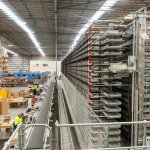Delivering products without overspend – valuable lessons from creatives

The transition from the idea stage to market is the journey of most successful products in the world, whether they’re digital health products, data products, or the new burger at McDonalds. Every product has several stages of design and development, and every product can fall foul of design intention mismatch, communication difficulties, self-inflating budgets, and other costly mistakes. We sat down with Rex Chekal, Principal Product Designer at TXI, a product innovation firm that specializes in digital health products, to explore the pitfalls of product design – and how not to spend an unnecessary fortune on the way from ideas to marketable products.
THQ:
Companies – and particularly companies in the technology sectors – have a reputation for overspending radically on their production pathways. How do we go about making sure that doesn’t happen?
Research, research, research
RC:
One golden key to not overspending? Invest in research. Make sure you know, absolutely, that the idea you have meets the needs of a user group, and that that user group is large enough to make the production journey economically worthwhile. Research, research, research. If you get the initial research right, everything flows from that because you have a sellable end-point to arrive at. If you don’t do the research, you’re pouring money into a hole and hoping really hard that it will work.
Every dollar you spend in research is going to save you hundreds of dollars for that same hour and development. So if you’re working with a partner or an agency, and that is one of your big fears, then you may have hired wrong.
This comes up in the upfront process when trying to find a partner – it’s your partner’s job or that of your consulting agency to help steer you away from that sort of money pit. If you have good project governance and you’re working in an agile fashion, you should always be able to be transparent, and be able to forecast effort versus budget and time. And those are the levers that we can pull.
We can cut scope to get the primary features we need to get out to validate an idea. It’s not like once we release a product, it is done, forever, the end, we’ve solved everything.
A lot of companies overinvest in that initial release. And I see that happening for many reasons at large companies.
Sometimes there are too many stakeholders, with too many priorities, and maybe not a clear “decider,” or messenger to the decider. So often what happens is you as the designer never get to talk to the person that’s going to make the decision. It’s usually through whoever they have deemed the liaison.
That ends up being a game of telephone and a game of coaching and trying to train that stakeholder to actually communicate the message that you want to the decider. And that is a big area of risk. The more steps in the communication journey, the bigger the risk of miscommunication, and the bigger the miscommunication, the higher the chance that the budget is going to go over, without necessarily delivering satisfaction with the end result.
A matter of trust
THQ:
So what’s the key to guarding against these costly miscommunications?
RC:
I really believe in building trust, having a true partnership, where anyone can say what they need to say. Like if you’ve been through six or seven ideas, you should be able to expect a binary choice, yes or no. I’m always trying to drive every conversation to that sort of binary choice.
The issues start arising when you can’t get that answer from the decider, and it becomes more of a game of “How do we communicate?”
Once upon a time…
THQ:
That will be something lots of companies can identify with, the loss of a common language in the design and development process. Any tips to get it back?
RC:
I do it with storytelling through presentations. There are lots of media I can use to try to drive a decision, but they all increase the amount of work I have to do just to get to an answer, let alone build a product. So the lines of communication are highly important, and having that relationship of trust – and ideally, access to the decision-maker on the project – are key.
THQ:
And investing in the research stage, right?
RC:
Obviously, as a product designer, I’m always going to talk about how research is going to be important, because I think a lot of businesses ideas come from the top down or from the notion that “We have an idea, and there’s a hole in the market here, where we can own it, or we think there’s a problem.” And they’ll just build something, and maybe you know, overbuild something, put it out in market, and then it fails, and then they end up just pulling it back.
The power of “No”
I would rather clients came to us before they start anything, because your designers can help you validate your idea – or save you huge amounts of cash by showing you why it’s not as great an idea as you think it is. We’re going to poke at it, we are going to do qualitative research, we’re going to take any analytics or quantitative research that you have to apply against that. And we’re going to go through and synthesize all this research into what we think are the main pain points or insights that could be valuable to a product.
And sometimes that recommendation that comes out is no, we don’t actually think there’s a market here, we don’t think there’s a user or we don’t think it’s good for your business. Maybe the market’s saturated, maybe the amount of money you would have to spend on user acquisition to grow at scale would be so high, it would be more than the cost of the build. A lot of companies don’t think about that. They see a market that is popping up and growing in popularity. But they don’t understand that gathering users at scale, and then continuously improving, is going to be really hard without a large marketing budget, or some strategy of getting people into the app, or the product.
In Part 2 of this article, we’ll learn about the importance of company culture, choosing the right partners, and how to navigate those lines of communication, to ensure that whatever product you’re developing, you don’t waste important dollars getting lost along the way.











